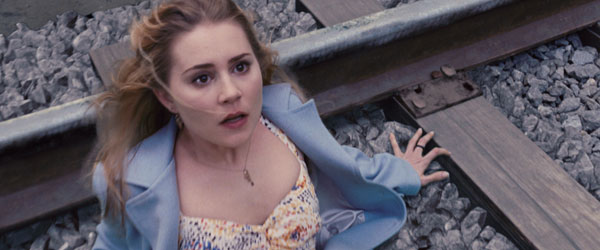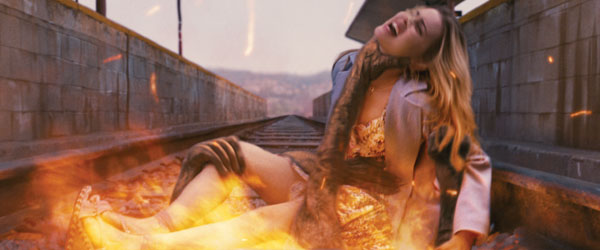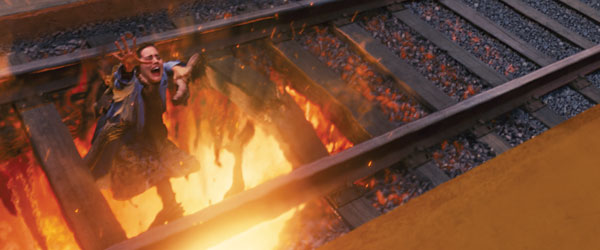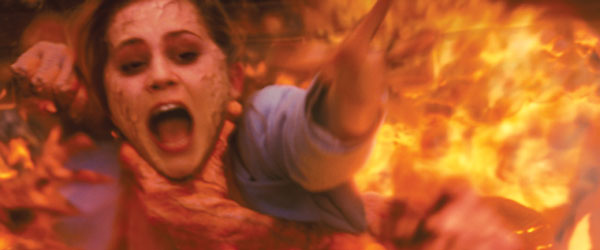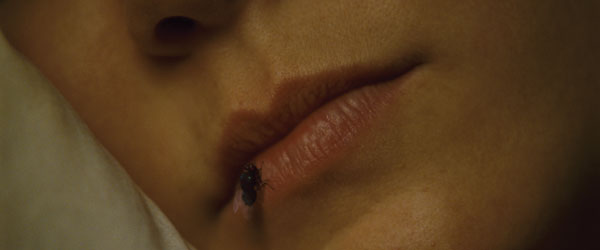|
They also took on a number of single shots and animated a key character, a pesky fly signaling the approach of a vengeful demon, Lamia, whose curse haunts the lead character Christine after she refuses to grant a loan to an old woman at work. The woman, furious and humiliated, puts the curse on Christine, invoking the evil Lamia to hound her relentlessly and, finally, drag her to hell.
Setting the stage
Whenever the fly appears, landing on Christine’s eyelid as she sleeps and creeping up her nose, buzzing into her car or into her mouth, the demon is sure to follow, wreaking havoc. In one scene, it circles, lands on the camera ‘lens’ giving the audience an unappetizing view before flying off for more mischief.
Matt Jacobs and Tom Schelesny were VFX Supervisors for Tippett on the project. Matt explained that during the six months the studio worked on the production, the crew grew and shrank from just a few members for the shots of the fly to a full crew for the main ‘drag me to hell’ sequences.
Tippett’s sequence at the start of the film sets the stage, giving a glimpse of hell as the earth splits open under a hapless young boy and demons’ arms reach up to drag him below. However, at the end of the story, just when the audience might think their heroine has put demons and curses behind her, hell returns. Christine stumbles on a railway, as set becomes the green screen stage for a digital extension that included a CG track, background and train rushing through. The earth under her erodes away to reveal the white hot cave of hell.
Hell in miniature
Tippett built a practical miniature of this landscape, complete with rocks and stalactites, and recorded at least a dozen shots on a RED One camera on their own stage, applying different combinations of effects for each pass – smoke, lighting and interactive lighting to suggest live flames. Lighting TD Jim Aupperle, experienced with practical and miniature visual effects, handled the specialised lighting. These passes were layered and composited together to give an effect of burning fire and smoke flowing through the scene.
Matt said the RED was useful for capturing such elements because the results could be viewed almost straightaway, approved and handed to the editors. Their camera was provided by Miguel Ortega, a Tippett Studio modeler and independent film maker.
Because the ‘set’ was a miniature, the fire itself had to be handled separately to overcome the ratio problem. This time using a Phantom HD cam, real fire, smoke and embers were photographed at very high speed, about 150 fps, to produce slow motion footage that was used to give an illusion of flames of infinite size and depth.
Digital makeup
Matt and Tom’s crew didn’t want to resort to matte painting to depict hell, preferring to build the miniature, supervised by Lorne Peterson, and used Maya nParticles for the moving rock. They created the effect of the rocks and earth opening to reveal hell and healing up again over her after her descent. This and a number of other effects were not things they were specifically asked to do but were devised as they developed sequences to make them more compelling and convincing. Photo references of real trains were mapped onto the CG train to make it more realistic. Extra CG arms were added and enhanced in the final scene to drag Christine down, adding to the horror and violence.
As she is dragged into the flames, Christine’s digital makeup is actually a composite of part digital, part plate and part CG model to achieve the cracking and fracturing of her skin, an effect the team called ‘dessicating’. Raimi’s movie was not recorded digitally, so one of Tippett’s jobs throughout was making their footage and CG work match the grain and look of the film.
Compositing
Renderman and Shake were used for compositing. The team didn’t develop production-specific software tools but focused instead on building up a good collection of elements, real and CG, for compositing. The miniature was built with help from experienced friends in the local, practical FX pool of talent, some of whom are former ILM model shop staff in Tippett’s local area near San Francisco.
nParticles, which Tippett used for the moving rock in their sequences, was introduced to Maya in the last year, the second module built on the Maya Nucleus unified simulation framework. Its toolset simulates complex effects including liquids, clouds, smoke, spray and dust. It features particle-to-particle collisions, dynamic behaviour, interaction back and forth between particle and nCloth, cloud and blob hardware display, constraints and preset rendering. Maya Nucleus was designed as a fast, stable framework for creating directable simulations. Because Maya Nucleus was constructed as an open system with an API, it is also intended to work into the future with third-party or in-house plug-in solvers.
Matt said he regards the work they put into ‘Drag Me to Hell’ as an opportunity to contribute to a great movie. He added that CG is a valuable innovation for effects artists and getting better all the time, but that using as many practical elements as possible continues to gain a stronger response and sense of recognition from audiences.
Words:Adriene Hurst
|
